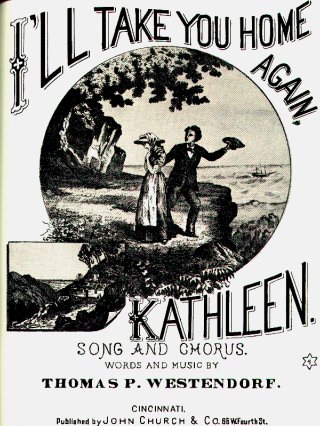Sheet Music
Today, America's story spins out in the songs we sing. The University of Houston's College of Engineering presents this series about the machines that make our civilization run, and the people whose ingenuity created them.
The first music printed in our Colonies was the Bay Psalter. That was in 1640, only twenty years after the Pilgrims landed. Besides a one-page tract and an eight-page almanac, that was the first printing done here. Music was that primary to our early settlers.
Dichter's and Shapiro's Handbook of Early American Sheet Music, a long list of our early printed music, helps show us who we once were. The Bay Psalter was first. It held the texts of hymns but no tunes. Printing notes was too hard for our first crude press. Not 'til the 9th edition sixty years later did the Bay Psalter finally offer the first bare tunes printed in the Colonies.
Religious songbooks with complete music appeared in the early 1700s. Our first organ was built in Philadelphia in 1737, and a music store opened there in 1759. That same year saw the first known secular American song -- Francis Hopkinson's lovely lilting melody about freedom in a new land, "My Days Have been so Wondrous Free." It would've made a great national anthem, except (like "The Star Spangled Banner") it's too hard for most people to sing. The first orchestral score came out in 1791 -- "The Death Song of an Indian Chief." (I wonder what that was!)
The American Revolution spawned all kinds of music. The Yankee Doodle melody was around before the war, and the familiar verse, "Yankee Doodle came to town," doesn't seem to've appeared in print until long after the war. The original verses were things like
Brother Ephraim sold his cow,
And bought him a commission, ...
By now, printed music no longer served only church services. Now it began reflecting a new life in a new world. We wrote songs to celebrate our presidents. We published so-called Negro Songs about slavery. One had the title "I Sold a Guiltless Negro Boy."
A popular English drinking song, "To Anacreon in Heaven," served many texts before the War of 1812. Then Francis Scott Key wrote his poem "The Star Spangled Banner" during the siege of Fort McHenry. It was set to "Anacreon in Heaven" and published in 1814. Key liked that tune. He'd written another poem for it years before:
Where mixed with the olive, the laurel shall wave
And form a bright wreath for the brows of the brave.
Down through the 19th century, sheet music poured out of our presses. We sang songs about the west and songs about the sea. Songs made fun of each wave of immigrants. We sang heart-rending songs about the pathos of life -- "I'll Take You Home Again Kathleen," "Darling Nelly Gray," and "Jeannie with the Light Brown Hair."
We sang around the piano, we sang in the streets. We sang until Edison and Berliner invented the new phonograph machine that would henceforth sing for us. Sheet music is still around, but now it's a tool for musicians. It is no longer part of the furniture of every household.
I'm John Lienhard, at the University of Houston, where we're interested in the way inventive minds work.
(Theme music)
Dichter, H., and and Shapiro, E., Handbook of Early American Sheet Music, New York: Dover Publications, Inc., 1941/1947.
For more on the Bay Psalm Book, see Episode733. For more on the history of printed music, see Episode 628.

Image courtesy of UH Music Library (1876)